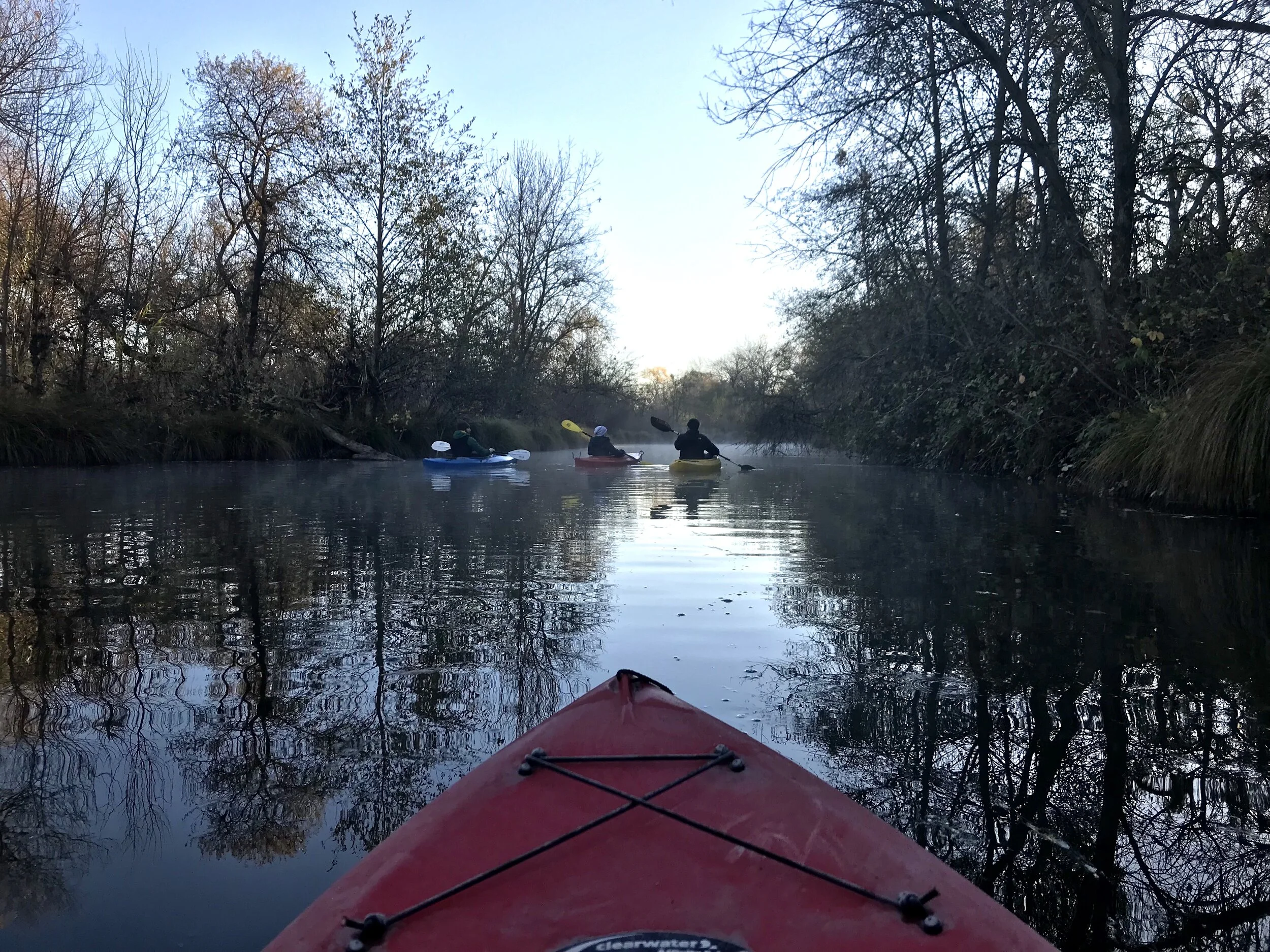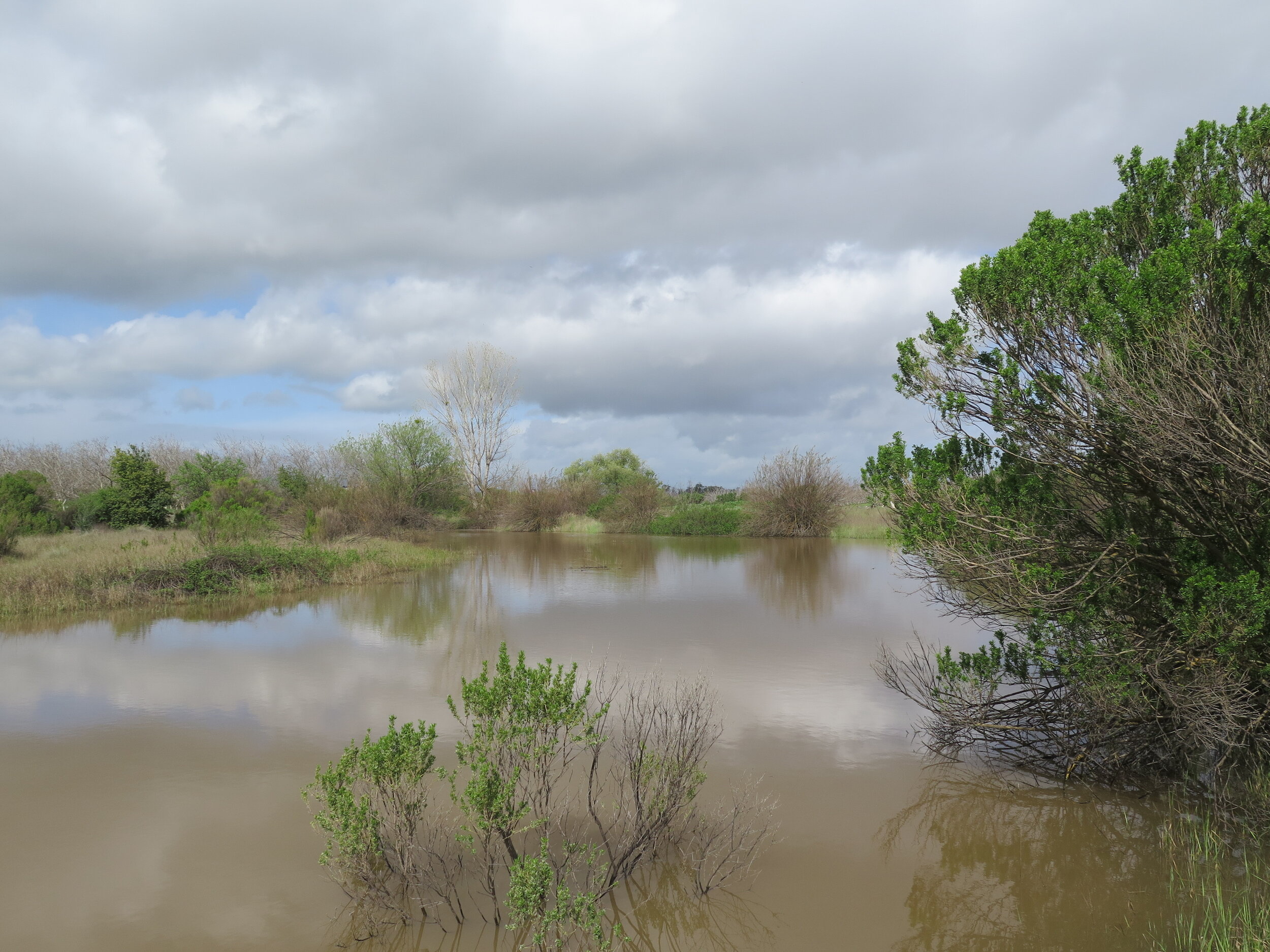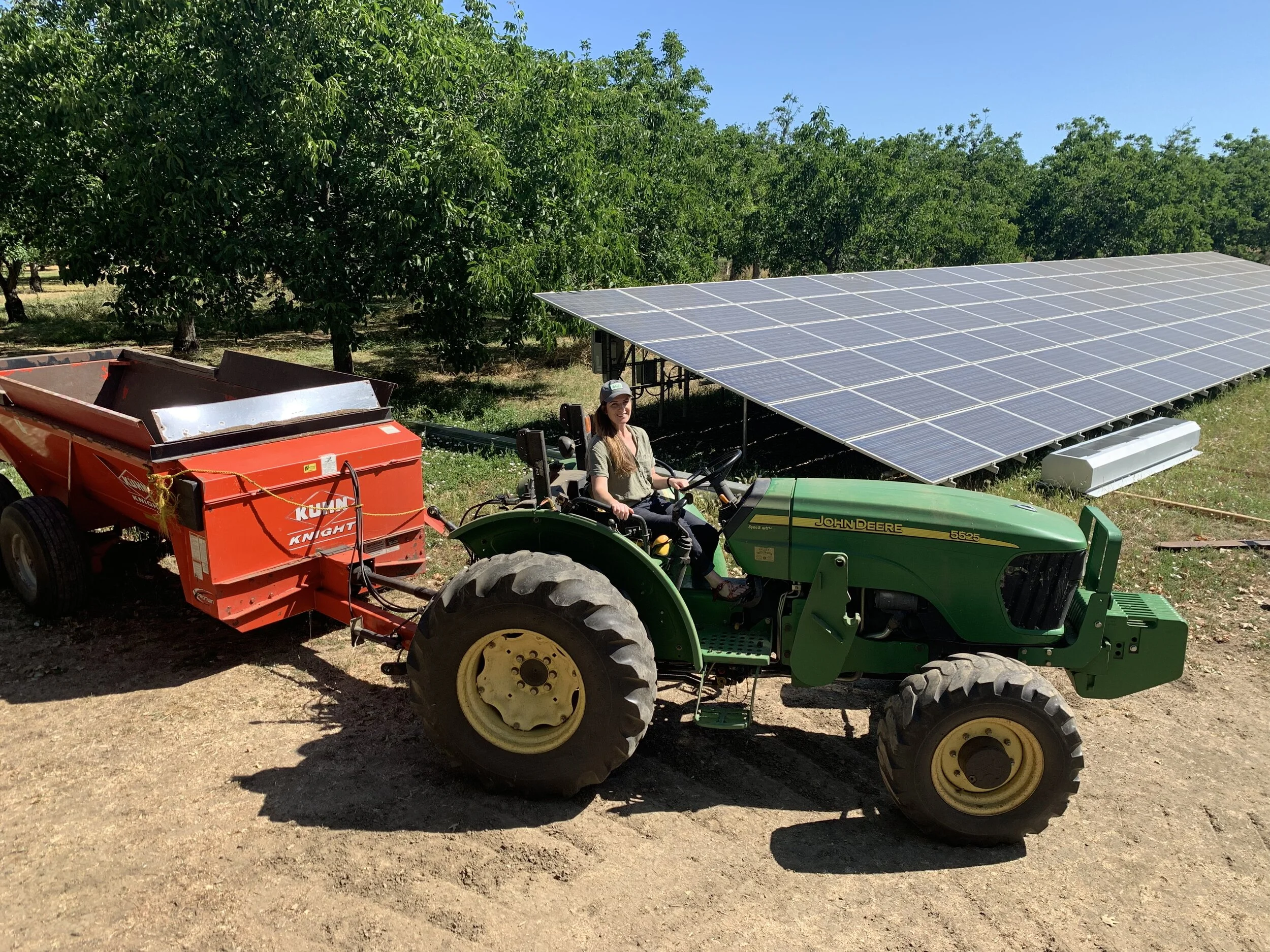Water, Energy, & Technology
Over the years we have taken great measures to decrease our environmental footprint on Sierra Orchards. We work hard to decrease our water and energy use, increase carbon sequestration, and incorporate new technologies to make our farm more efficient.
Water
Because the Putah Creek flows along the edge of our farm, we take significant precautions and use a combination of conservation practices on our land to protect and improve the water and aquatic life in the water system. Craig became interested in conservation over 30 years ago. Craig’s conservation interest resulted in a wide variety of natural resource improvements to our farm and continues to inspire our on-site research and projects.
Craig spoke with University of California Extension farm advisors, and farmer friends to help guide his conservation practices. Those conversations have led to a number of partnerships and cooperative projects over the years to improve natural resources on Sierra Orchards.
Aside from transitioning to organic in 1995, which ended our use of synthetic chemicals that often leach into and contaminate water systems, we created a tail-water pond (pictured below, on the right) to trap irrigation overflow and nutrient-rich topsoil, converted most of our acreage to drip irrigation systems, plant cover crops and increase the organic matter in our soils to enhance the soil’s water retention capacity, and practice Managed Aquifer Recharge (i.e. water banking/ground water recharge).
We are careful with water, trying to ensure that no water is wasted and that our farming does not negatively affect waterways downstream. The two photographs below provide examples of two of our water conservation projects.
The photo on the left shows a w-weir that we installed in the Putah Creek corridor that crosses our property. W-weirs provide grade control, dissipate energy, and concentrate the creeks flows. They can also be used to create natural pools. By increasing flow diversity in the channel, w-weirs can help create an ideal environment for Salmon that are seeking daytime refuge in cool, oxygenated waters.
The photo on the right is snapshot of our tail-water pond that we dug and surrounded with native plants to provide habitat and refuge for birds and other wildlife. Tail-water ponds are used to collect the water running off the lower end of fields that results from normal irrigation practices. By capturing the irrigation water, we are able to improve irrigation efficiency, minimize the impacts of tailwater runoff, and collect the nutrient-rich topsoil that can be carried away by irrigation waters.
However, now that we have converted most of our irrigation on that section of the property to micro-irrigation through drip lines, our water use is even more efficient and results in very little runoff. As a result, the tailwater pond is primarily used to capture rain water and provide a sanctuary for native flora and fauna.
We created a w-weir in the Putah Creek to assist with salmon recovery.
Our tail-water pond planted with native grasses, trees, and shrubs.
Energy
Two solar arrays with a total output of 175kW offset 90% of on-farm electrical use from pumps, the walnut processing plant, residences, and shops. And while many of our machines still consume fossil fuels, we have been able to reduce fuel consumption by ⅓, all by eliminating tractor passes with our no-till, near zero input, silvopastured approach.
Technology
To enhance our water use efficiency and ensure our walnut trees are not being over or under watered, we use a pressure chamber and soil moisture sensors. Technology like the pressure chamber and Acuity Agriculture’s soil monitoring systems allows us to collect real time data on the moisture and water retention conditions of our soil and trees. Further, it enables us to create a database of past measurements, indicating how our water use improves over time and what factors affect our water use.




